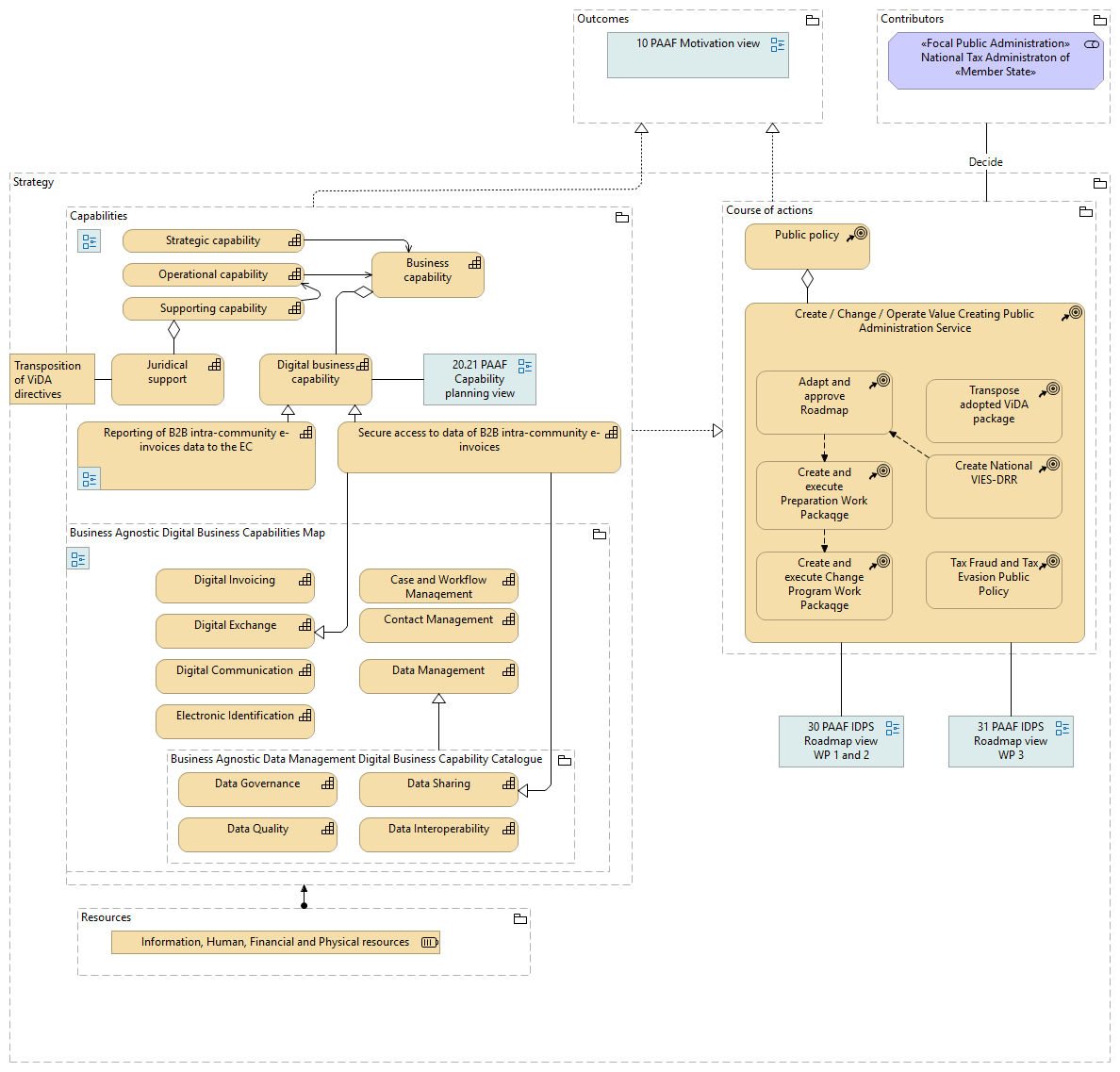
Description: The "Strategy" view in the KU Leuven PAAF RA groups the most salient strategy elements of the Enterprise Architecture of the Focal Public Administration.
Narrative:
The [Motivation] view contains the [Strategy] grouping element.
The [Strategy] grouping ABB in the KU Leuven PAAF RA groups the most salient strategy elements of the Enterprise Architecture of the [Focal Public Administration].
This grouping contains three subgroupings : [Course of actions], [Capabilities] and [Resources].
The [Course of actions] subgrouping of the [Strategy] grouping contains the strategic decisions of the direction of the [Focal Public Administration] regarding their enterprise architecture.
A [Course of Action] represents an approach or plan for creating or changing some [Capabilities] and [Resources] of the [Focal Public Administration], undertaken to achieve a strategic [Goal].
In this way, when the [Course of action] is properly executed, it will realise one or more [Outcomes] of the [Focal Public Administration], that wil create [Public value] for the [Stakeholders].
The [Capabilities] subgrouping of the [Strategy] grouping contains the top level strategic, business, operational and supporting capabilities of the [Focal Public Administration].
A [Capability] represents an ability that the [Focal Public Administration] possesses.
A [Business capability] is the ability of the [Focal Public Administration] to deliver a service to the public. In the PAAF reference architecture, these are the capabilities of main importance, while all other capabilities are either serving the [Business capability] or aggregated by it.
[Business capabilities] realise the [Course of actions] that result out of a [Public policy] decision, and therefore realise the [Outcomes] that create [Public value] for the [Stakeholders].
A [Capabilities view] reference is provided to a more detailed capability map.
The [Resources] subgrouping of the [Strategy] grouping contains the different categories of resources of the [Focal Public Administration]
A Resource represents an asset owned or controlled by the [Focal Public Administration] that can be assigned to one or more [Capabilities].
Examples include information resources, for example documents and data and the processes that deliver them; human resources; financial resources (budget) and physical resources like buildings and equipment.
The relations between the different elements in the subgrouping of the [Strategy] grouping are defined between the different subgroupings. The semantics of grouping imply that a relationship from or to a group should be interpreted as a collective relationship with the group’s contents. Using this notation, the following relations are defined in the [Strategy] grouping.
[Course of actions] have a realise relationship with [Outcomes].
[Capabilities] have a realise relationship with [Course of actions]. The derivation rules of the archimate specification therefore also allow to state that [Capabilities] have a realise relationship with [Outcomes].
[Resources] have an assignment relation with [Capabilities].
To conclude this narrative: all subgroupings have a aggregates relationship with the elements they contain, and all groupings have an aggregates relationship with the subgroups they contain and therefore also with the elements that are contained within the subgroups.